To be able to broadly discuss about OBD inspection, it is important to understand what OBD means and stands for.
OBD on its own stands for On-Board Diagnostics which are basically on newer vehicles which have this standardized computer system, which specifically has the functions of monitoring the electronic sensors of the engines as well as the emission control systems and not excluding the catalytic converter… all these while the vehicle is still driving, and so ensuring that the vehicle is performing its designed functions or if there are issues or problems with the vehicle not carrying out its supposed functions.
Bearing the explained meaning of OBD, it then goes to emphasis that OBD inspection involves the checking of the On-Board Diagnostic functions in the vehicle to determine if the vehicle passes the tests which indicate the vehicle is suited to be driven without causing problems, both to the driver on the short or long term which might affect the effectiveness of the vehicles functions.
Having known the specifics of what is involved in OBD inspection, there arises the questions on the minds of many as to when one is supposed to, and needs to take their vehicles to go through an inspection process.
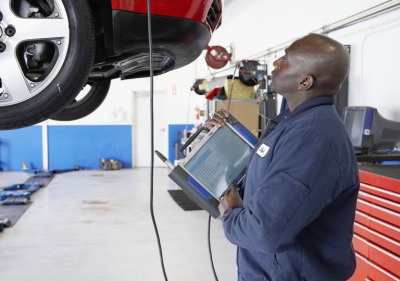 OBD Scanners, like one in picture, are typically used for OBD Inspection.
OBD Scanners, like one in picture, are typically used for OBD Inspection.
Basically it all depends on various factors ranging from the aspects of the type of the vehicle, and much basically depends also on if the vehicle is from the years of 1996 and upwards to much newer models, of which this range, all have or come equipped with On-board Diagnostics System, which basically as have highlighted, helps to detect emission problems in the vehicle, much earlier before it blows up into a much bigger problem for the vehicle.
It is important to have a vehicle perform an ODB inspection on a yearly basis, as this acts as a check-up for the vehicle to make sure that functions in the vehicle is still okay and working in good condition as expected after the vehicle has been constantly running on the road for a year.
Also it’s important to know that within the time frame of this one year period, there might be situations of even before it’s up to a year, and the vehicle develops a situation whereby the engine light indicator is on and flashing.
That’s an indication that there is an immediate problem which needs to be addressed more urgently than waiting for the one year period, at that point and situation, it is important to find the nearest qualified OBD inspection repair shop so as to get the vehicle checked, and also to avoid the vehicle developing worse problems which might break down the vehicle completely.
Even when there is the circumstances that the vehicle is still running fine and driving good, but there is the “Check Engine” light ON or the “Service Engine Soon” light is On, then the best advice is not to ignore or postpone servicing the vehicle, but that should be a priority immediately.
Very important to also note that while it is vital to take your vehicle to the nearest inspection shop when necessary and needed, it’s important to know that you do not take your vehicle to the OBD inspection when you just replaced your car battery, or a situation where your car battery is dead or has been disconnected.
This is because, at the state of the mentioned situations of the vehicles battery, the vehicles computer memory will not be active or even the memory will be lost, and thus it will be impossible for the vehicle to pass an inspection.
The main basic ways to get your OBD inspection done is basically by locating the qualified and certified OBD inspection shops and then at which time you subject your vehicle to the OBD inspection and get your vehicle tested and confirmed that it passed the Inspection or not.
There is also the other options of performing this OBD inspection by other means, such as the OBD car code readers and scanners.
The OBD scanners very much helps to provide access to the very data that the systems use to perform these inspections in all the various makes and models of vehicles, which were practically produced since from 1996 year upwards to the present year.
The scan tools which are very much more slightly expensive but perform a vast majority of different features, do provide more access with regards to information about the vehicles manufacturer specific codes, also providing extensive and customizable access to current live and recorded data, and same time opening the access to much more advanced troubleshooting information which will enable a much more direct approach to the problems of the vehicle and rectifying it.
The usage of the scanners are very much simple to use as they all use the same connectors which is basically defined by SAE J1962.
It’s very simple because it just involves inserting a universal plug into the OBD-II diagnostic connector which is in the vehicle, or also in some other newer vehicles which have additional scan tools of keys or modules which augment the universal connector, all directed in allowing the access and connection to the OEM-specific informations or the controls.
And we also have the scanners that connect via Bluetooth, like in below pic…
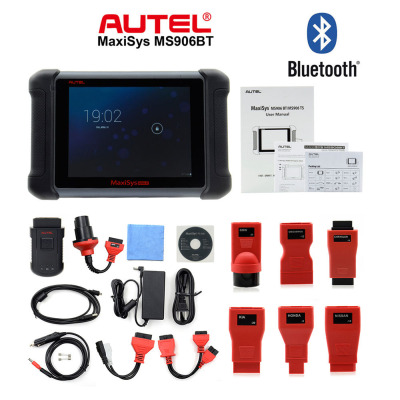
On the other hand, the code readers are much inexpensive, and it is specifically designed to read and clear codes from any of the vehicles which have that OBD-II features.
The code readers have some few inherent limitations as it basically lacks information on the manufacturers specific codes as well as offering limited access to the other data’s which might be useful in checking other informations in the vehicle.
But it is really simple to use, as it just requires less complications, in the sense that one can just diagnose the vehicles problem without the need to go to the mechanics. Just plugging the Code reader in the vehicles computer system and then interpret the trouble code readout as been displayed by the code reader.
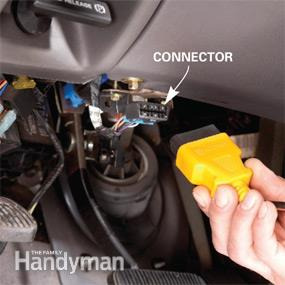 OBD Scanner is plugged into cars OBD2 port for inspection as seen above.
OBD Scanner is plugged into cars OBD2 port for inspection as seen above.
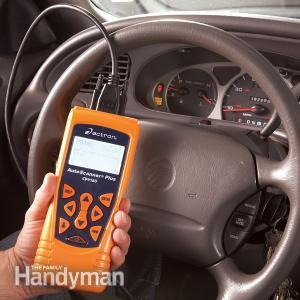 OBD Scanner then reads cars readiness.
OBD Scanner then reads cars readiness.
Even in the situation that the code reader is not the best of best to solving vastly all the problems of the vehicle, but it gives the driver a head start immediately as to what is wrong with the vehicle and checking if the functions are in good condition or which likely section needs to be checked and resolved.
There are the code readers which comes with their reference books so you can access the interpretation of the trouble code readings from the code reader device, as well as there is the other types of the code reader which comes with the capability to check on the internet from the device and translate the meaning of the trouble code, and thus enable the vehicle to be properly fixed of the specific problems which the vehicle might have.
It rather is also understandable that anyone that has no time for self service or self-application of the OBD inspection by themselves will most definitely resort to going to the OBD inspection shops so as to perform the inspection on their vehicles on the yearly basis or on a situation when there is a sudden issue with the vehicle or warning signs and indications.
It is beneficial also because the vehicle owners don’t need bother or stress themselves about finding out the problem of their vehicle themselves, but leave it to the OBD inspection shop mechanics to sort out, and very much at various different costs which might be high depending on the inspections extent to be covered and then subsequently the level of discovered problems in the vehicle.
In also a situation of which the vehicle has an issue in a distant location from the OBD inspection shop location, it becomes also an issue that the vehicle can’t even be checked or an OBD inspection done by the driver so as to check if the problem of the vehicle is a simple problem that can be fixed on the spot easily or needs additional professional help, since the vehicle owner depends on going to OBD inspection shops, leaves the option of waiting until car is transferred and brought to the inspection shop.
But having the OBD code reader for example, has much bigger aspects of benefits which makes performing own OBD inspection in any situation at any moment more realistic and saves a lot of time. It very much is known that many drivers don’t even know that the vast majority of modern cars do posses a lot more technology and elements that makes it easy to perform self OBD inspection on one’s vehicle.
Gone are the days when if there are vehicle situations or noises in the vehicle and people have to open up different parts or areas in the vehicle to check and think of where the problem might be coming from.
With the much affordable code reader, an OBD inspection can be done on the vehicle anywhere on the spot and then get needed information as to what is going wrong with the vehicle, and very much in many cases, when the OBD inspection is done and the results are shown from the code reader, the diagnostic tool can help in figuring out what is wrong and then they apply a fix faster on the vehicle, more easily than even going to the mechanic shop.
It’s not like basically it’s too complicated to use, with regards to the code reader and as mentioned earlier. With the easier codes which are simple to read from the additional tools given to interpret the codes, makes it ideal to differentiate the various codes and specifically focus on the main problems as indicated.
And if there is really a need for professional trained mechanics to perform work on the vehicle, it will be more direct to the problem as the self OBD inspection with the Code reader has already pinpointed the problem in the vehicle.
Another benefit of the Code reader is how it affects lower costs of maintenance and many at times fixes, which might not even need you to go to the mechanic as you have already done the OBD inspection yourself with the device.
Basically its always normal for mechanics previously to overcharge for discerning the problems of the vehicle or running an OBD inspection on the vehicle, but with the present situation of the availability of Code Reader, it makes it more better that many vehicle owners will now run an OBD inspection and diagnosis themselves, and then having knowledge of the problem, can either fix it easily themselves, or then have the options of going to various mechanics and checking the best offers to fix the specific problem which is already known.
This goes well also to make sure that the various mechanics and car fixing shops are very much held accountable for exactly what work they do, as since the problem with your vehicle has already been figured out, the mechanics are expected to just go and fix that specific problem and not create more problems themselves or give different ideas of problems which may boost their target of charging you higher.
Surely in this ways, it will really make sure and guarantee that you get more direct work on your car done with the mechanics knowing that you already have knowledge of what’s wrong with your vehicle, and also it will reduce the amount of unnecessary expenses you need to spend and also ensures the maintenance of your car to be very affordable.
Based on this benefits, it is also important to bear in mind that there are many diagnostic tools and code readers in the market presently, so it is pretty much vital to choose the consumer level one’s which is easier to use and not much complicated and still gets the results of OBD inspection and diagnosis of the vehicle.
Analyzing the aspects of the benefits of the OBD Inspection Scanners is also of great importance so as to highlight the vast additional functions which it covers and does, coupled with just reading the codes from the vehicles computer system and interpreting the problem.
In the OBD Scanners, there are some few of them, like the TOAD-Pro which basically has a very wide specialized range of coverage of up to 48 car makers of which it can be used to perform OBD inspection Scan on the vehicles. It also is a software which is compatible with windows based computers or laptops.
It also covers the aspects of allowing access of ABS, airbag, enhanced powertrain, instrument cluster, transmission as well as many other controllers in the vehicle.
Despite all these functions, it surely does not lose the main attribute of user-friendly interfaces, printing data in individual report formats, displaying data in a more comfortable form rather than just raw data, and can be used in browsers as well as spreadsheets.
Also on the list of Scanners for OBD inspection and diagnosis is ProScan. This is viewed as the most user-friendly PC-based OBD scanner as it also comes with the mix of its hardware and software.
It is really beneficial as it handles a lot including helping to diagnose the driving behavior of the vehicle aimed at lowering its fuel consumption. It also checks the engine light detector and saves the data and analyzes the problem, and it allows generating diagnostics report for the vehicle just with one button.
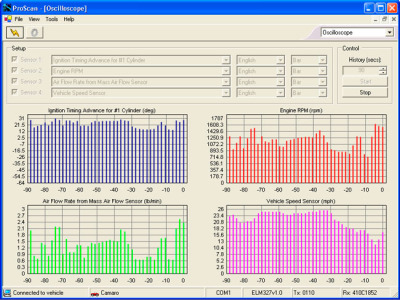 OBD Inspection software reporting vehicles inspection status.
OBD Inspection software reporting vehicles inspection status.
PCMscan (now replaced by TOAD-Pro) is also another efficient OBD scanner which maintains a broad multiplicity of the OBD II hardware interfaces as it allows you to view and make charts from the diagnosis, Log and playback the diagnostics data in real time and it surely supports all vehicles from the US and Asia and European cars, which obviously where all built from 1996 year upwards.
Standing out is also its customized dashboards and many more features as also seen in the picture below…
In this list of OBD scanners, one surely will not forget the OBD II Auto Doctor which is a much advanced OBD Inspection diagnostics tool and practically one of the best if not the best.
This Scanner is well highlighted because in the midst of its functions and features, are the facts that it enables the user to examine and reset the alert codes, and at same time the user can interact with the car’s OBD II system more readily and turn the computer or laptop device into a very high clever automotive scanner.
It is a realistic saying that every vehicle owner surely always want to understand their car and make sure all is well so they can be able to enjoy their car and go about their daily activities.
Auto Doctor is very much an excellent tool for vehicle owners to have that connection with their cars and understand their vehicle functions and conditions more up close, monitoring your vehicle data in the present time and when car is on or off.
This Scanner surely helps to know if the vehicle is due to undergo emissions test, as well as viewing the level of fuel consumption and fuel emissions in the vehicle. It also gives that opportunity to check and monitor the OBD II indicators in perfect real time and detect breaking.
In addition to supporting built-in DTC database which includes 14000+ alarm codes, it also reads the VIN, calibration identifications as well as calibration verification numbers of ECU, and in all, you sure can send the data’s via email.
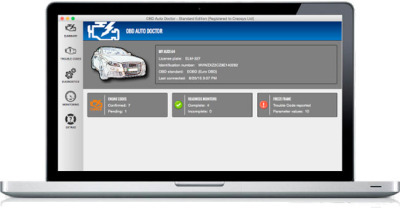 OBD Auto Doctor is another trusty OBD inspection diagnostic software.
OBD Auto Doctor is another trusty OBD inspection diagnostic software.
There is nothing more important like vehicle owners having that explicit rest of mind when they are driving their cars at any time and at any moment. Not having to be in a situation to worry about some sounds that’s coming out from their vehicle, or too worried about that red light or orange light indicating that there is an issues.
This is so because in any of these scenario’s, all you need to do is just to utilize your handy OBD Inspection tools or devices and perform the inspection with regards to why there is that noise or light indication in your vehicle.
As there is that constant relay of information transmission to the car’s computer modules, all coming from the various sensors throughout the car, and at which time there comes up a situation, it becomes easier for the OBD scanner or code reader to access the information and detect the problem much earlier and so actions are taken to correct the problems before it becomes too serious and break down the car.
At least presently it is a big advantage that we are not in an era of when the car tools and scanners which are used for OBD Inspections were much highly specialized and practically was more on the side of professional skills needed to operate them or vehicle owners to depend solely on the OBD inspection shops and even many of them were really designed for specific cars brands and makes.
In other words, the scanner or tool for VW will not have been suitable to be used for Mercedes or Toyota.
Also the factors that the prices were very much astronomically high for the regular vehicle owner to own. But times have changed now of which these OBD scanners and Code readers are not too high off the mark of affordability.
Many come in grades of simple functions of just returning problem codes and nothing more, and are affordable, others are more advanced with bigger functions and the cost a little bit much higher than the others, but still at a reasonable range of cost which is affordable by different levels of vehicle owners.
A very important aspect is also noteworthy that diagnostic software and scanners all come with multiple language options which is not only for those speaking English, but for non-english speaking users also.
With this option of the variety of language availability which allows practically everyone to be able to use it, it makes it possible for a car owner who can’t afford a more higher advanced OBD scanner, to go and borrow from a friend or relative or even a repair shop and then by himself perform the OBD inspection and scan on his or her vehicle and determine what in real time in a broader sphere is wrong with his vehicle.
Another point not to be overlooked is also the fact that apart from the aspect of bad battery or changed battery which may affect the result of the OBD Inspection of a vehicle, you have to adhere to the process of making sure that they have gone through the special feature which most diagnostic tools comes with, which is the feature of “inspection and maintenance readiness.
It is important for every user to make sure that this issue is first resolved and the check engine light is turned off, before they run the tests for inspection and maintenance. This is important because it removes that situation of having a fake inspection readiness when in actual facts the vehicle has real time engine problems or other big issues.
There has been situations when different drivers and vehicle owners have performed the self OBD inspection themselves or even going to the auto shop to do the OBD inspection and in the process of making the emissions test and all protocols followed, and still the vehicle is rejected because it’s labelled as the vehicle is not ready.
If that situation happened in your case at any point in time, do not be alarmed or panicking or fearing for the worst with regards to your mind running different scenarios and assuming your vehicle has much bigger problems which might be the reason why your vehicle was said not to be ready.
In that situation it just practically means that the Onboard Diagnostic System has not very much completed all of its required self-test monitors which it normally does to keep an eye on the overall performances of your vehicles system, and in the vehicles, there is practically many as much as half a dozen or even much more OBD monitors in the vehicle, which before the emissions tests will be done, has to be completed.
Despite the fact that if there arises too many “not ready” status when the emissions tests are been done on your vehicle, it surely will never allow your vehicle to pass the emissions test, but on reset, the OBD monitors should be able to complete their self-test which will then allow your vehicles OBD emissions inspection and tests to be completed and passed.
This situations are so because the OBD monitors are all working not just only when your vehicle is been tested for emissions or the usual OBD inspections, but also while your car is been driven every time and at any given moment, the OBD system Monitors various functions in the vehicle.
Broadly, some of the functions of which they engage in is like the Misfire Monitoring which focuses on detecting when there is ignition and fuel related misfires, which in turn may lead to emission increases or even damaging the catalytic converter.
Also the Fuel system monitoring which handles the detection of any serious faults which may arise from the mixture of fuel, and thus causing much increase in emissions.
The comprehensive component monitoring is very much another key function which helps in detecting the very major faults which occur in the engine sensors which will also lead to the increase of emissions.
So despite you not needing to worry about the “not ready” status during emissions tests and ObD inspections, it’s important to know the broader reasons why this occurs as the monitors have broader works been done before the tests and inspection as well as after the emissions tests and OBD inspections are done.
Below you can see a pictorial representation of a situation when the OBD monitoring system is not yet ready.
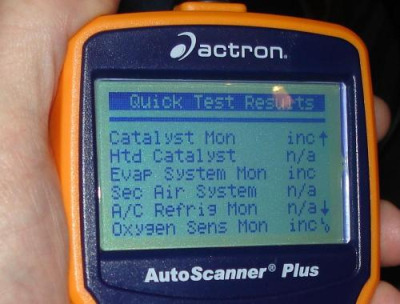 Typical OBD Inspection results from OBD2 scanner
Typical OBD Inspection results from OBD2 scanner
A very important “not ready” signal that needs to be highlighted is when there is the status of catalyst efficiency monitor “not ready”.
This is important because the catalyst efficiency monitor is responsible for making sure the catalytic converter is very much operating on a high enough efficiency level, so as to keep the exhaust emissions in the range and within the limits which is acceptable and normal for the vehicle.
When this is functioning very well, then there is practically no need for the vehicle to be sent to the shop for OBD inspection or self tests been done for emissions.
In this situation, sometimes there is that factor that the catalyst monitor may require a conducive environment or conditions of driving to be able to run efficiently.
It might need that the oxygen sensors monitoring has to be done first, and also driving at a speed of 60 to 65 mph for a minimum of 15 minutes, after which the catalyst monitor will run much efficiently, and sometimes the process has to be done on several times before the catalyst monitor will run effectively.
Also depending on the cars, they have different criterias and conditions for the catalyst monitoring to be able to run effectively and pave the way for the OBD inspection or monitoring to be done smoothly and tests passed.
For Toyota cars and models, the catalyst monitor is expected to run effectively when and during the vehicle been driven at about 40 to 55 mph for at least a period of seven minutes, and then a subsequent driving of the vehicle at about 35 to 45 mph at still about another seven minutes.
As for Chrysler cars, the catalyst monitors have more additional requirements, ranging from making sure that the “check engine light” indicator light is off, and then there is not presence of fault codes, coupled with having fuel levels which should be about 15 to 85 percent full and the coolant temperature should be above seventy degrees F.
And that’s not all, as the engine is also expected to have been driven for about Ninety seconds at a speed between 1350 and 1900 rpm, and then subsequently idle the car for five minutes and then drive the car at a speed between 30 and 45 mph for a time period of about two minutes, after which the catalyst monitoring will be running smoothly.
As can be seen the big difference between Toyota process and the process for Chrysler cars on this catalyst monitoring conditions to work effectively. It also is slightly different when it comes to GM cars as well as FORD cars.
In GM cars, it just needs the vehicle to be driving at speed of 55 mph for at least five minutes, and this process done for some couple of times, at which point the catalyst monitor will be running and very much in an effective way.
In the case of Ford cars, it’s slightly different, as the catalyst monitor will not run unless there has been the situation of the oxygen sensor monitor tests been run completely and at the end of the tests, there is no faults found.
After which there is the situation of making sure that the vehicle has been driven in a more specific stop and go traffic condition at five different motion speeds at a level of 25 to 45 mph and basically at a minimum of 10 minutes and above.
Despite all the explanations about the emissions and catalysts process might be overwhelming, but do bear in mind that the OBD inspection and the OBD emissions tests is basically a more simpler process all been okay.
The OBD II emissions tests basically consists of three parts which involves firstly the aspects of an inspector checking to see if the MIL light is coming On when the key is turned on, at which if the light is not coming On, it basically means the vehicle have failed the bulb check stage.
The next stage of the emissions tests is practically when the Scanner is plugged into the Diagnostic link connector and then the system is checked for readiness, and if all is okay and no fault code is signaled, then the vehicle goes to the next stage, but if there are too many monitors which are appearing not ready even after several tries, the vehicle will be rejected and still at a later time will be put through same process to get all systems ready before the tests.
The next and final step is when the Scanner is put through to command the MIL lamp to confirm it is taking commands from the Onboard computer.
Basically in the line of performing these tests, and there is fail and systems not ready, it’s just to take a step back and find out where the fault is coming from, and then restart the process.
Sometimes it might require pulling out all stored data codes and looking at the data that may help to pinpoint the problem and the cause.
Also the long-term fuel trim data can be very useful in providing useful insights in the situation with regards to the fuel mixture, in case sure issues arise.
Once all problems has been pinpointed and any faulty component has been rectified, you then go through the final step to make sure the problems are solved and the OBD II light is remaining off during this checks, after which you are cleared to proceed to conducting the OBD emissions tests.
Noteworthy is also the additional benefits and importance of having these OBD inspection’s done either by going to the OBD inspection shops, Doing the OBD inspection by yourself with either the OBD scanner or scanners and also the Code reader.
Apart from just checking the vehicle for problems and analyzing if all functions are working properly as supposed to be, also consider the effects of the wrong emissions been discharged from the vehicle into the atmosphere and which is due to faulty problems in the vehicle which have not been checked or fixed.
This is why there are mandatory laws and situations put in place to make sure there is the form of OBD inspections done on the vehicles to help limit these situations that cause the vehicles to be an additional hazard in an extreme way to the atmosphere via its bad emissions which also affect people breathing the polluted air, as well as it does no good to the vehicle’s general functions at large.
That’s why it becomes very important to perform an OBD inspection on the vehicle regularly as there presents any sign of an issue on the vehicle or indications from any of the areas which point to the fact of a part of the vehicle having an issue which needs to be checked.
And also why there are laws in place to make sure even when the vehicle is still in good working condition, to still have a yearly OBD Inspection which re-confirms that all in the vehicle is okay or detect any future problem and soon to be problems which might develop on the vehicle, at which appropriate measures be made to fix it in advance.
So in effect, it basically is been advised to at least get the OBD inspection done on your vehicle on a yearly basis, but also it is important to note that it is best to have the available tools to perform the OBD inspection in between the year if there are signs of issues with your vehicle, at which you can utilize the Scanners or the Code reader to find out problems quicker on the spot and ascertain problems in your vehicle and then take adequate measures to fix the problem yourself or seek the help of professional mechanics.


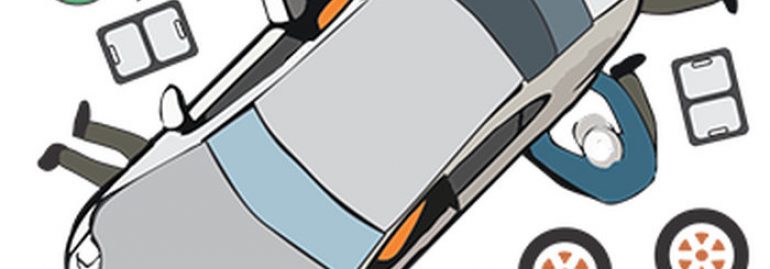
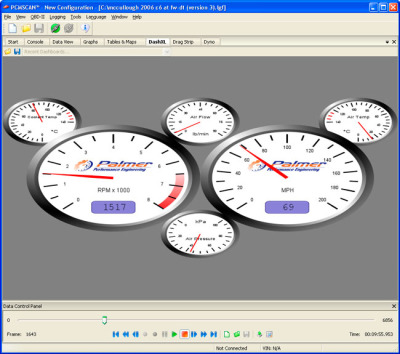

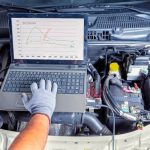

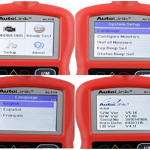
Using a Code Reader
The basic idea of using a diagnostic scan tool is to get the diagnostic trouble codes your vehicle automatically records when it detects a problem. This is the exact same process that mechanics use when you take it into a garage, just with much fancier, more capable equipment.
Plug the Diagnostic Tool into the OBD-II Port
Diagnostic tools download data from a vehicle’s onboard diagnostic (OBD-II) port. This universal access port will give you access to virtually anything the vehicle detects in terms of issues. To access the information, you need to apply a little juice to the setup.
Plug the end connector into the vehicle’s OBD-II port. Make sure you get a good, secure fit so the tool can communicate with the vehicle’s onboard computer.
Turn on the car. You don’t need to start the engine if your vehicle stores car codes in memory. If the engine needs to be on so the onboard computer can monitor its health in real-time, then you’ll have to start the car up all the way.